With four games to go in the Swiss Super League, Servette have played themselves firmly into UEFA Champions League qualification round contention. The Geneva-based side are placed second in the league behind runaway leaders BSC Young Boys.
Nevertheless, with only a few games to go, just eight points separate Servette in second and Grasshoppers in sixth. A further fascinating dynamic that is present is the fact that Servette have only the sixth-best goal difference in the league as well as the fifth-most goals scored with 43.
This scout report will look to first provide a tactical analysis of key elements of Servette’s principles in possession and then further look to explain why the side have struggled to clear goal-scoring chances, despite their lofty position.
General structure and principles in possession
On paper, Servette have lined up in 4-2-3-1 for the vast majority of their games this season which can be seen in the image below. However, like all teams, their lineup on paper has little to do with their structure in possession on the pitch.
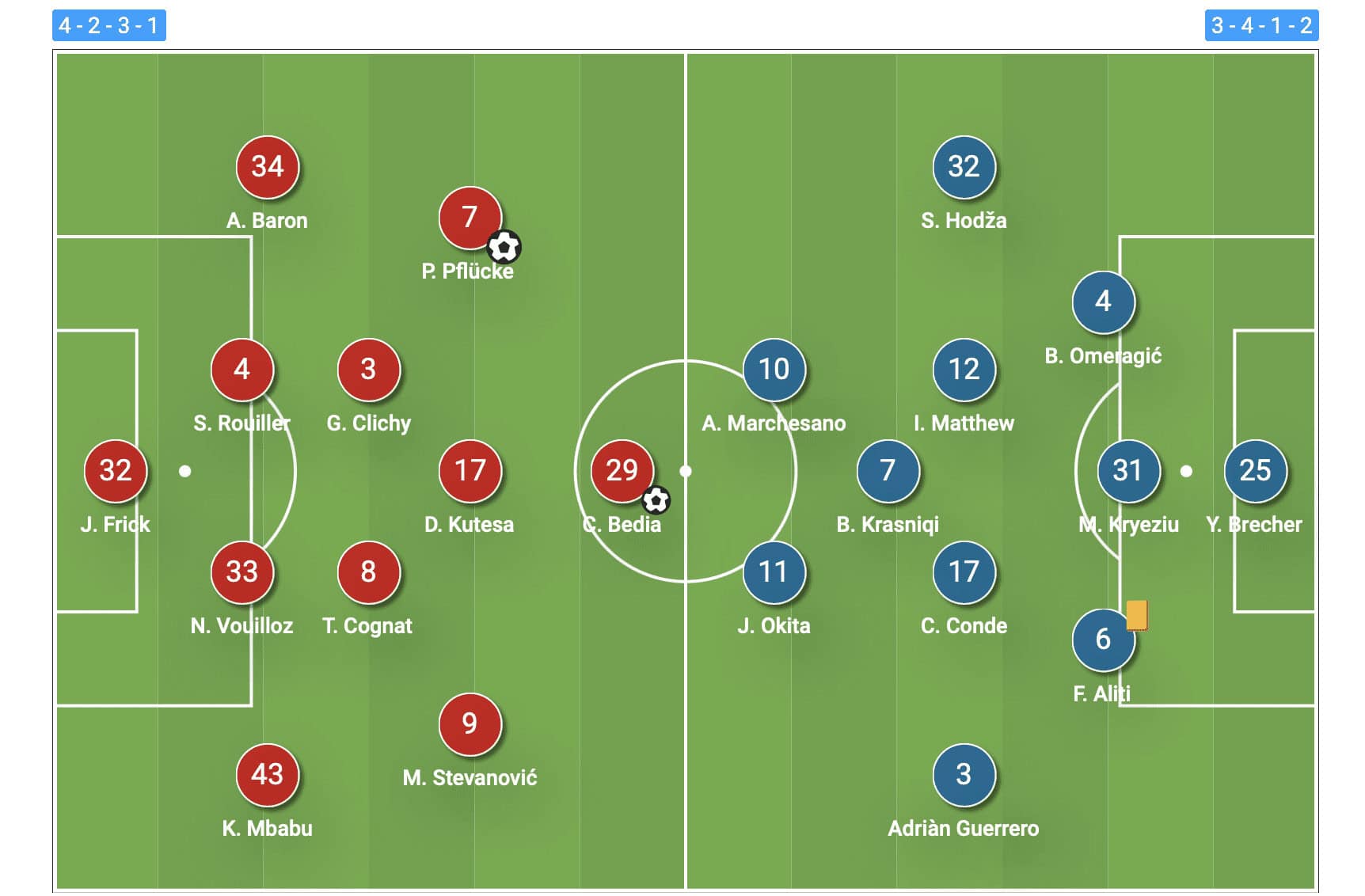
In possession, Servette play with a back three with Antony Baron the left-back dropping deeper in order to join the centre-back pairing of Nicolas Vouilloz and Steve Rouiller. On the right-hand side, Kevin Mbabu, on loan from Premier League side Fulham, positions himself further up the pitch near the touchline.
The holding midfield position is occupied by former Manchester City and Arsenal full-back Gaël Clichy, who is accompanied by two advanced midfielders ahead of him in midfield with the left winger stationed by the touchline in the wide areas and the right winger drifting between the half-space and touch line, with Chris Bedia as the central striker.
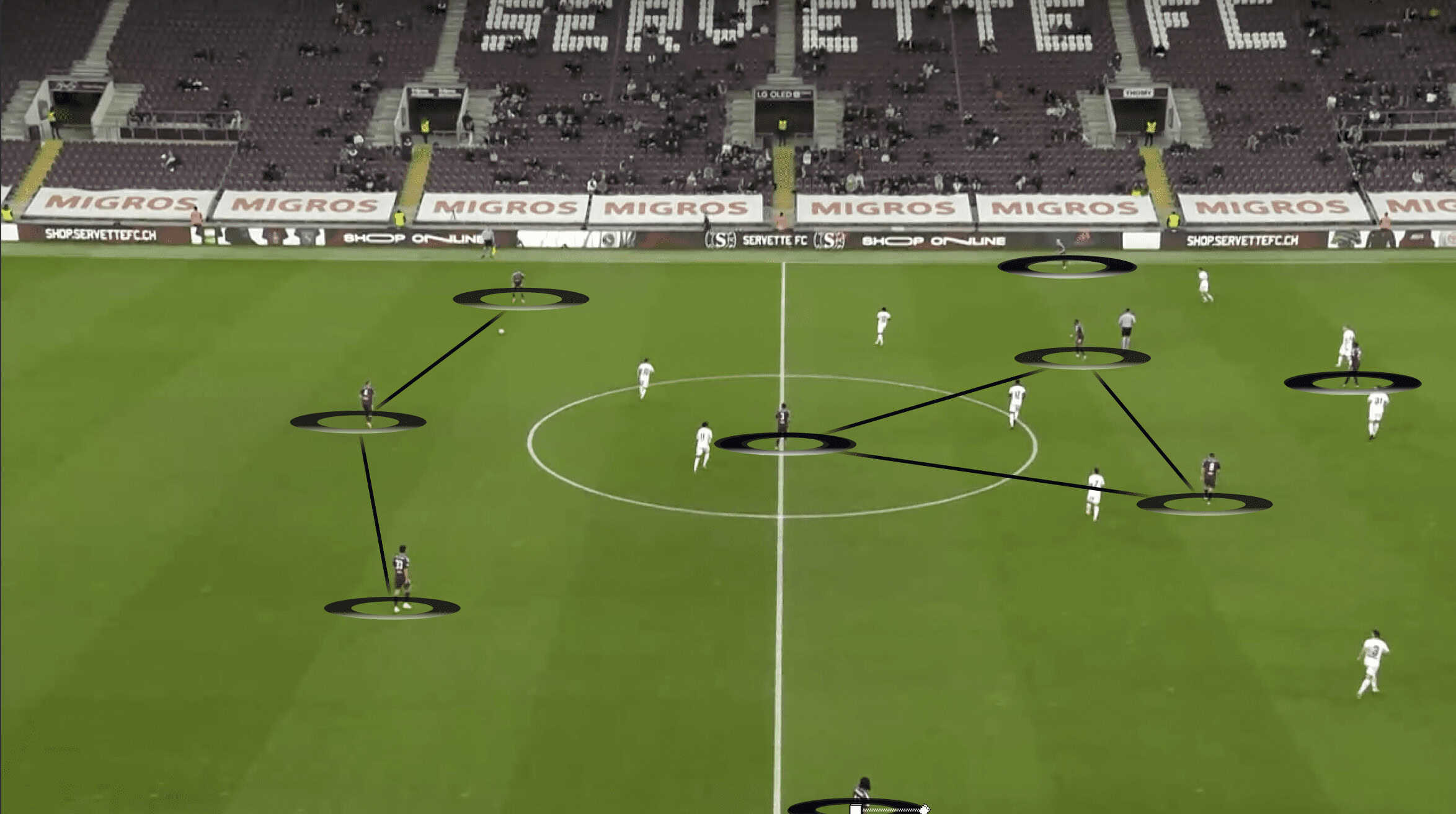
Servette will often circulate the ball through the back three with either Baron on the left or Vouilloz on the right advancing with the ball, if they can, into open space ahead of them, which can be seen below. In these situations, the ball carrier will primarily look to attack the last line of the opposition’s defence directly and play to the striker, Bedia, who runs diagonally into the space between the opposition centre-backs.
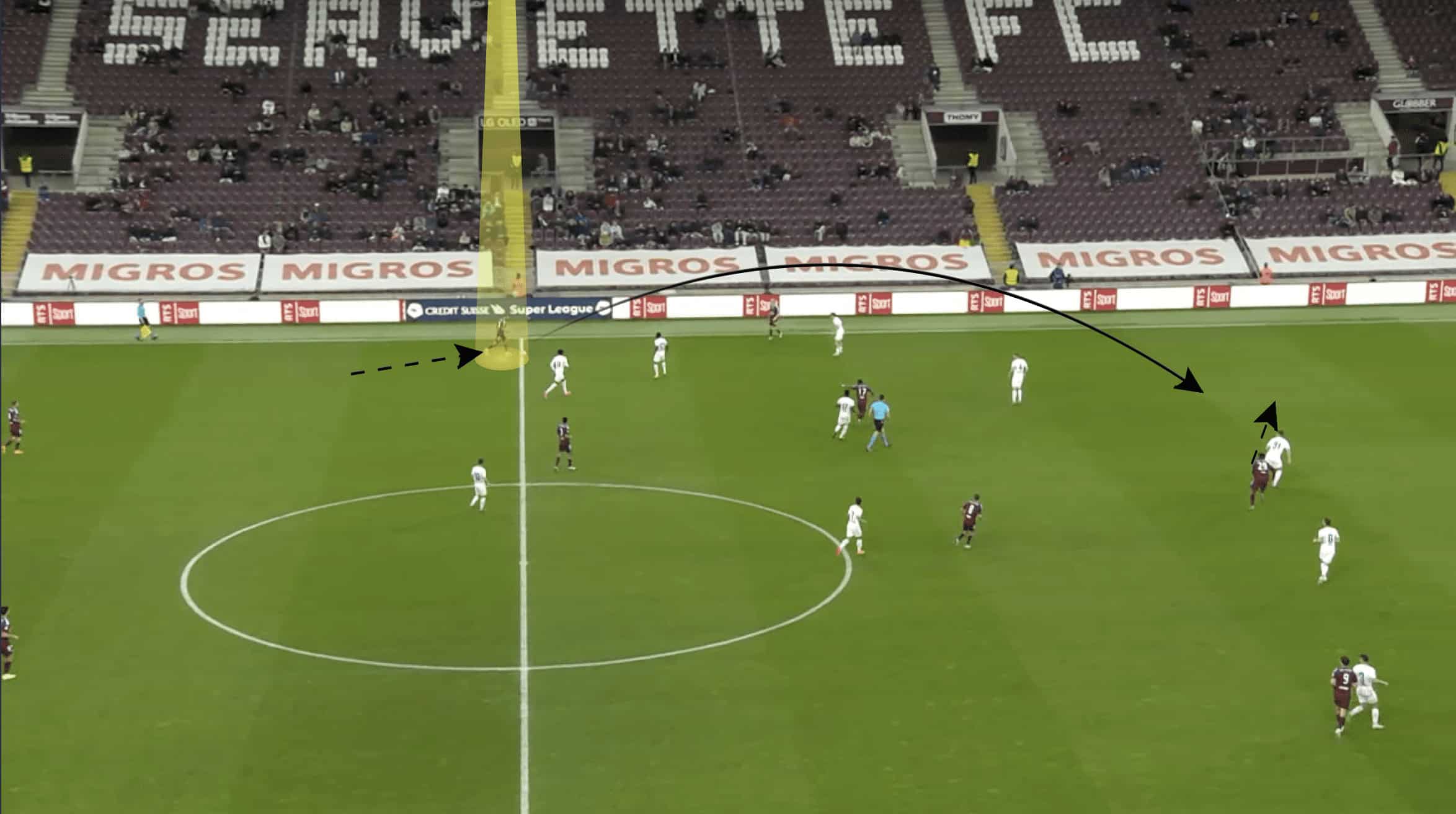
In these situations, the two advanced midfielders as well as Miroslav Stevanović look to support the recipient of the ball, by making runs towards the penalty area where they look to benefit from knockdowns or errors from the backline, as seen in the example below.
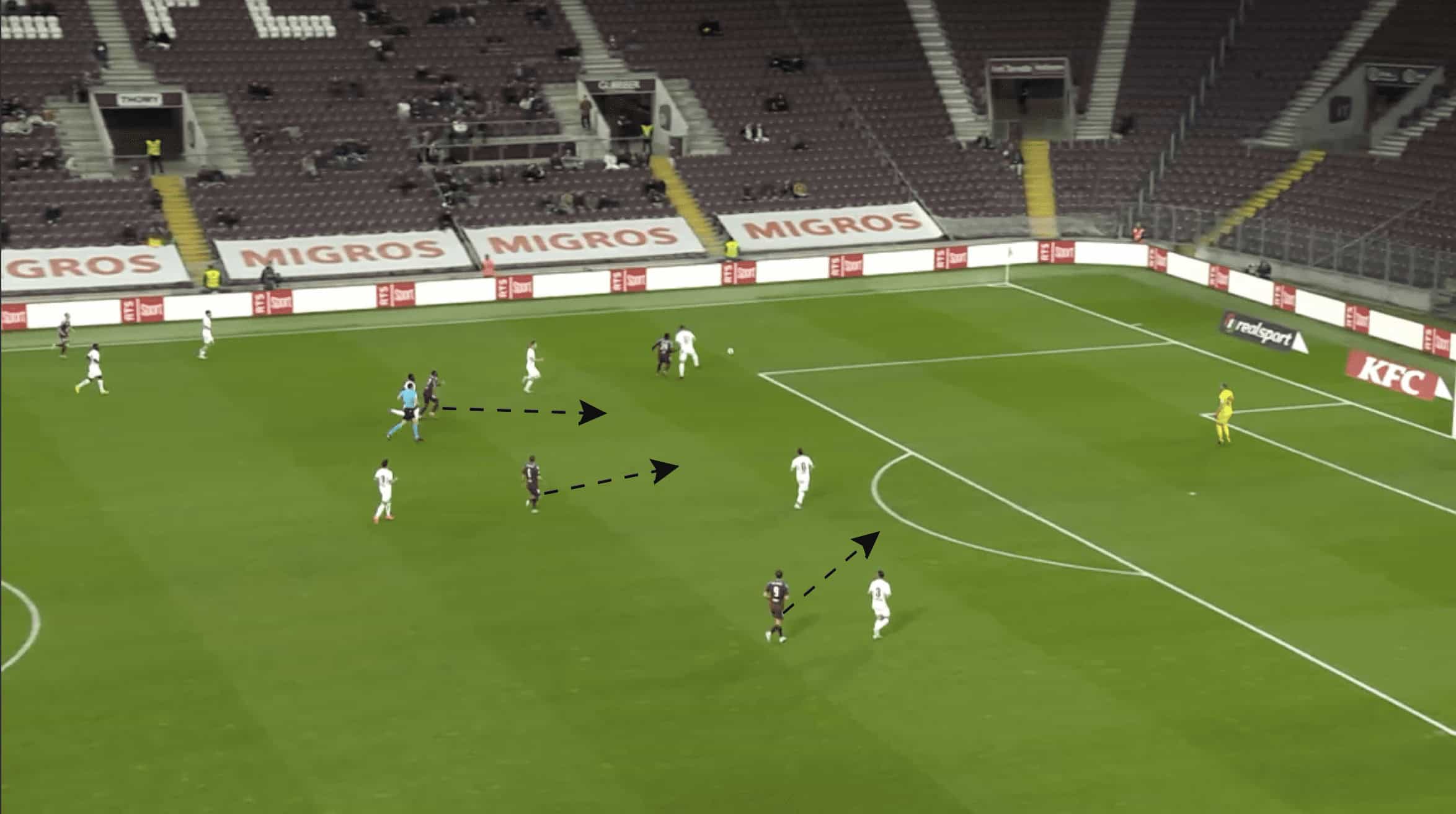
In the example below, a similar situation occurs but this time on the right-hand side, with Vouilloz receiving the ball in space and proceeding to advance into the space ahead of him.
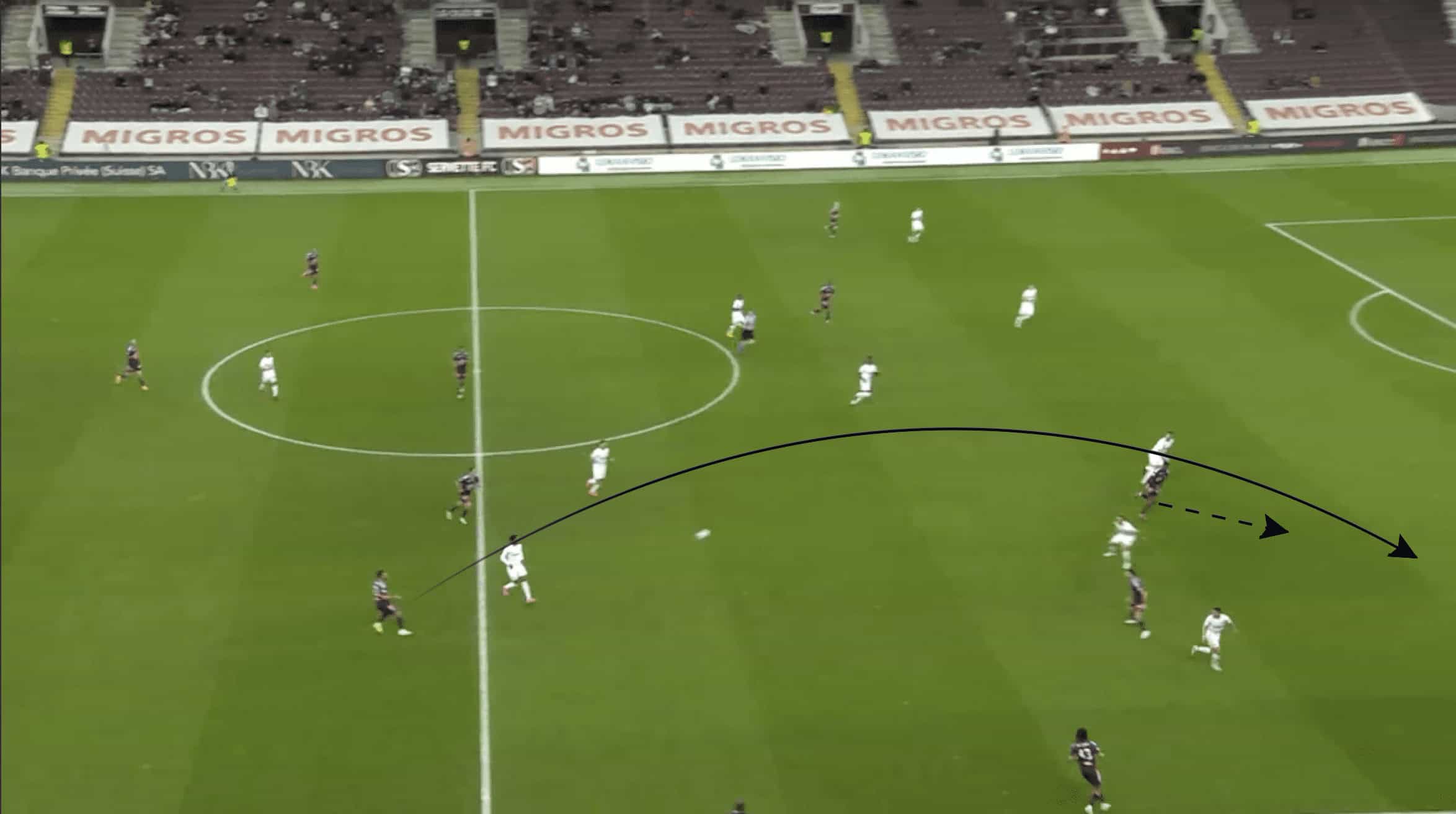
A pass is then played to Bedia, who once again runs into the space between defenders. On the far left, Dereck Kutesa as well as Patrick Pflücke can be seen making runs into the box.
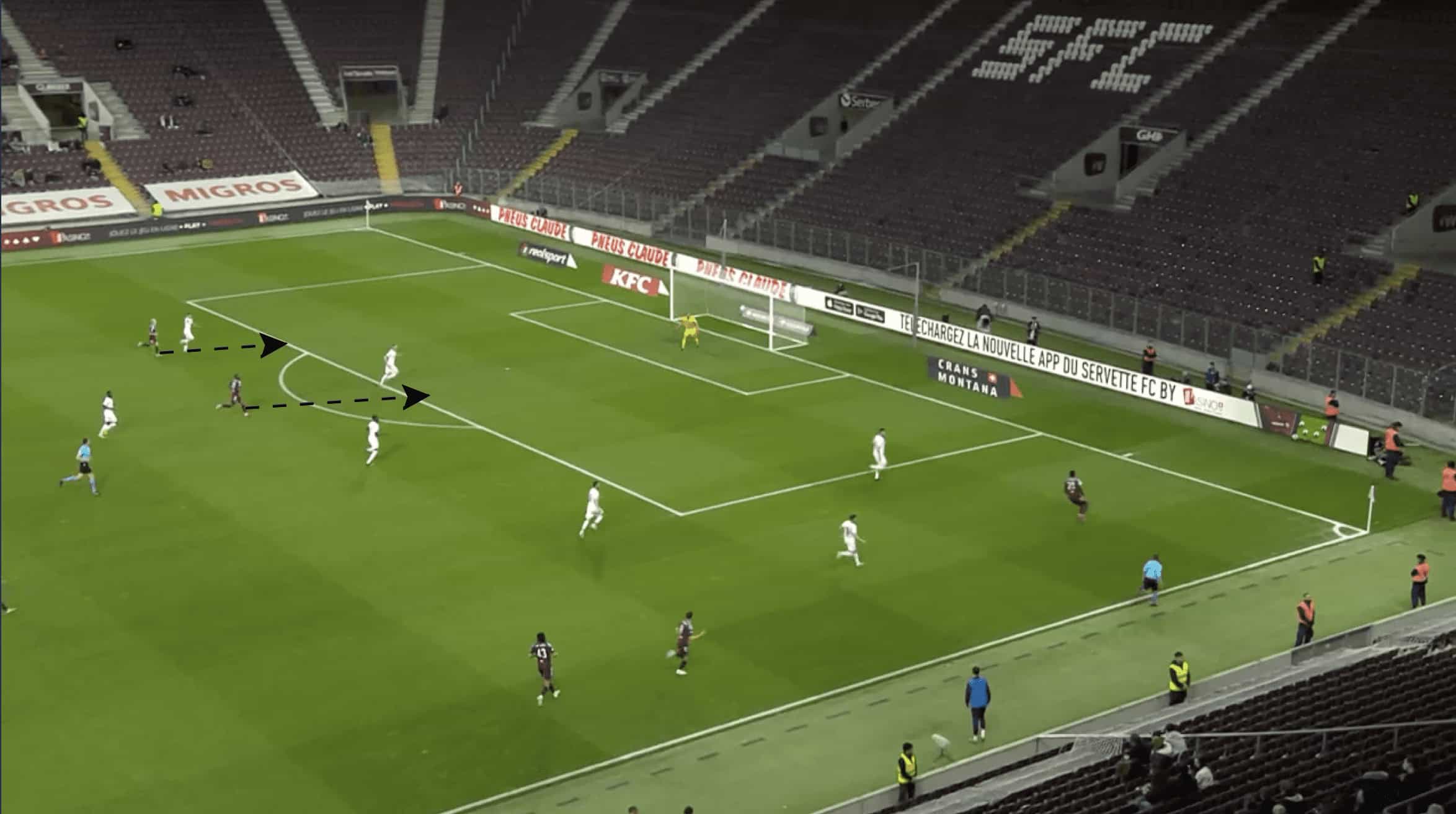
However, Servette do not just look to find Bedia when executing the long ball from deeper areas and look to also play direct passes to the wingers if they are relatively free. In this instance, Clichy plays a long ball to Stevanović out wide who then looks to immediately play a cross.
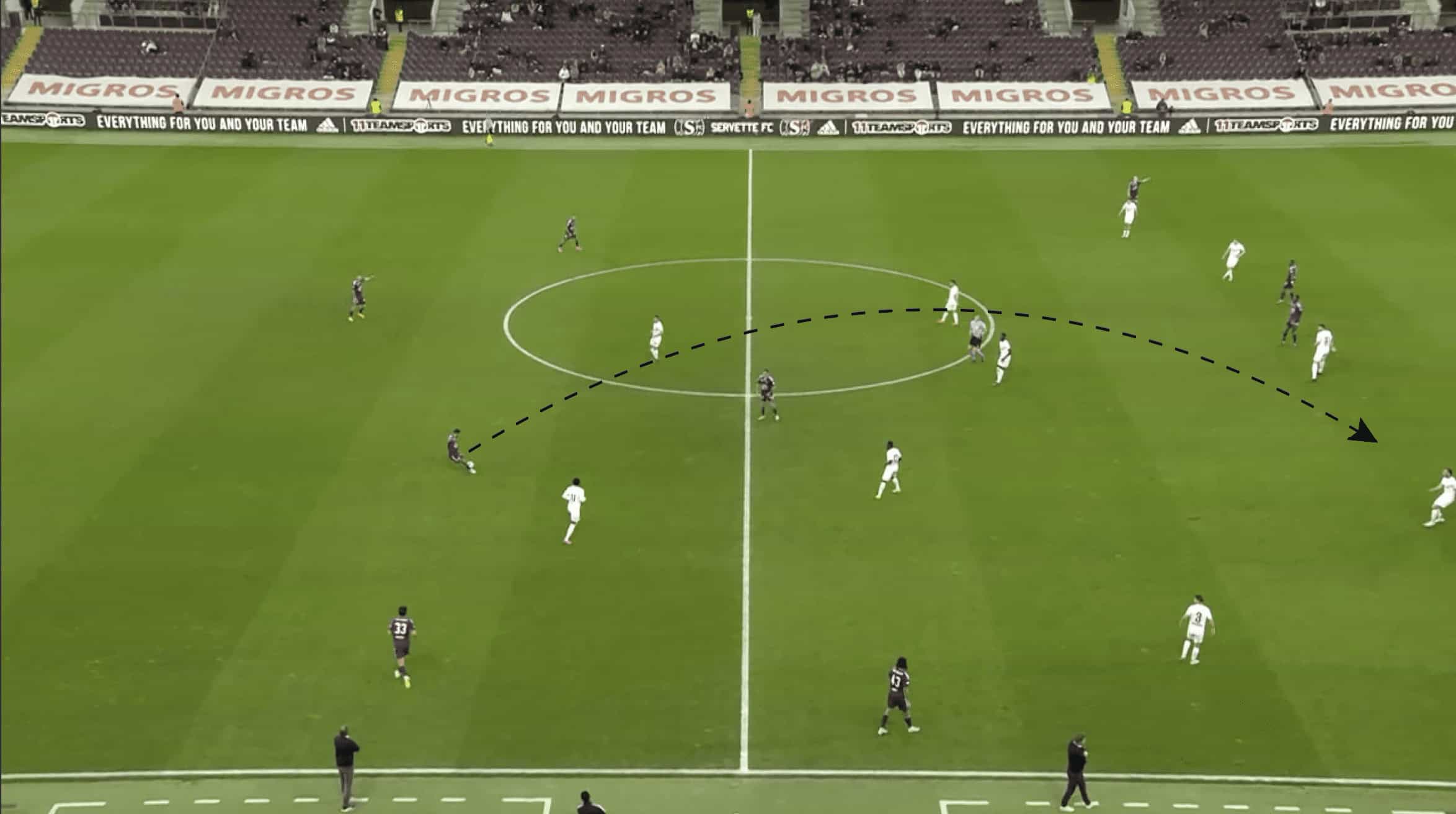
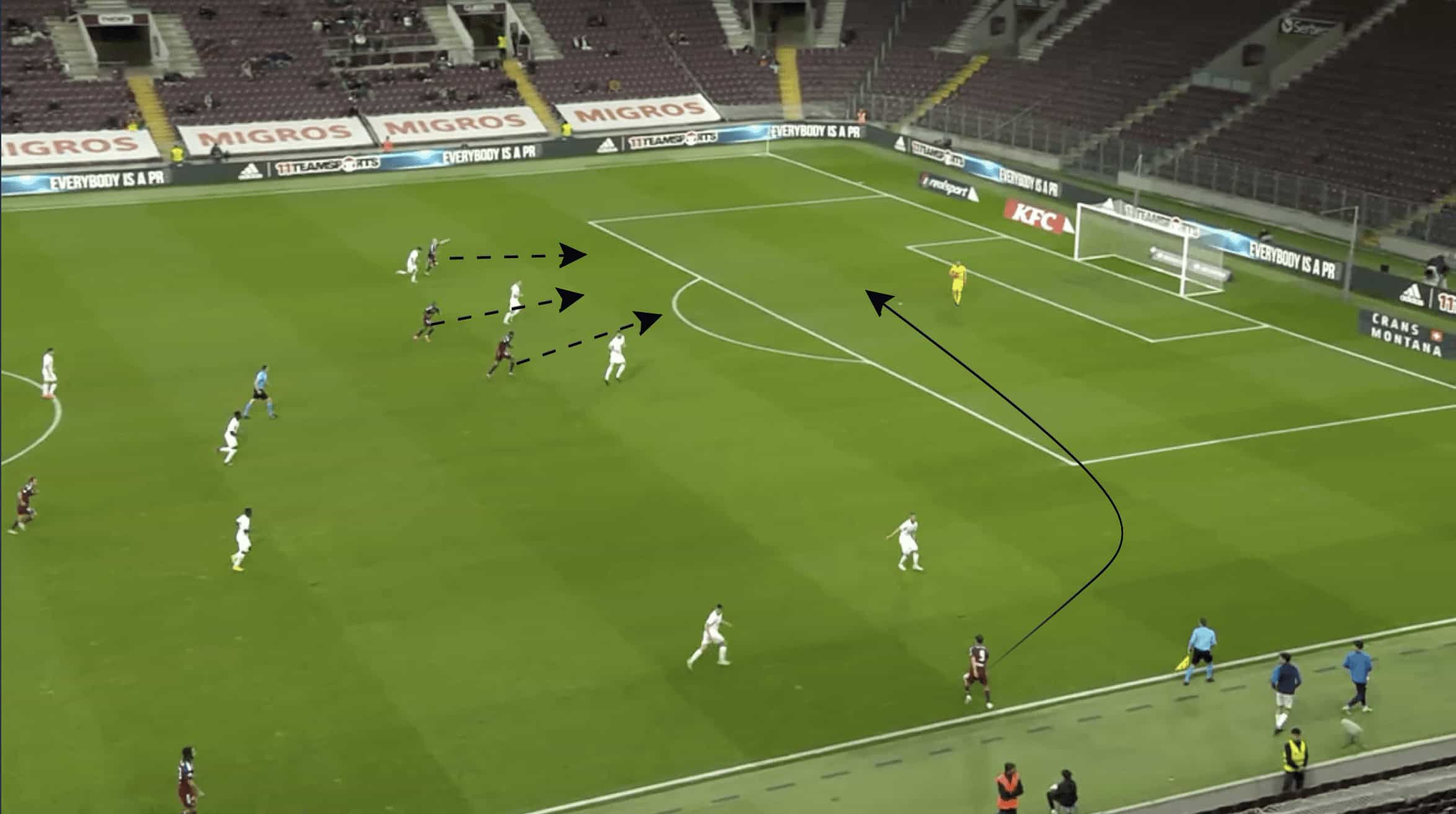
In addition to this, the ‘8s’ may also make diagonal runs into spaces between opposition defenders, such as in this instance. With the opposing wingback’s position oriented to the positioning of Mbabu, as well as the centre-back’s positioning oriented to Stevanović, the compactness of the back line is reduced. As a result, Kutesa drifts from the right-hand side into the space created by the positioning of his teammates.
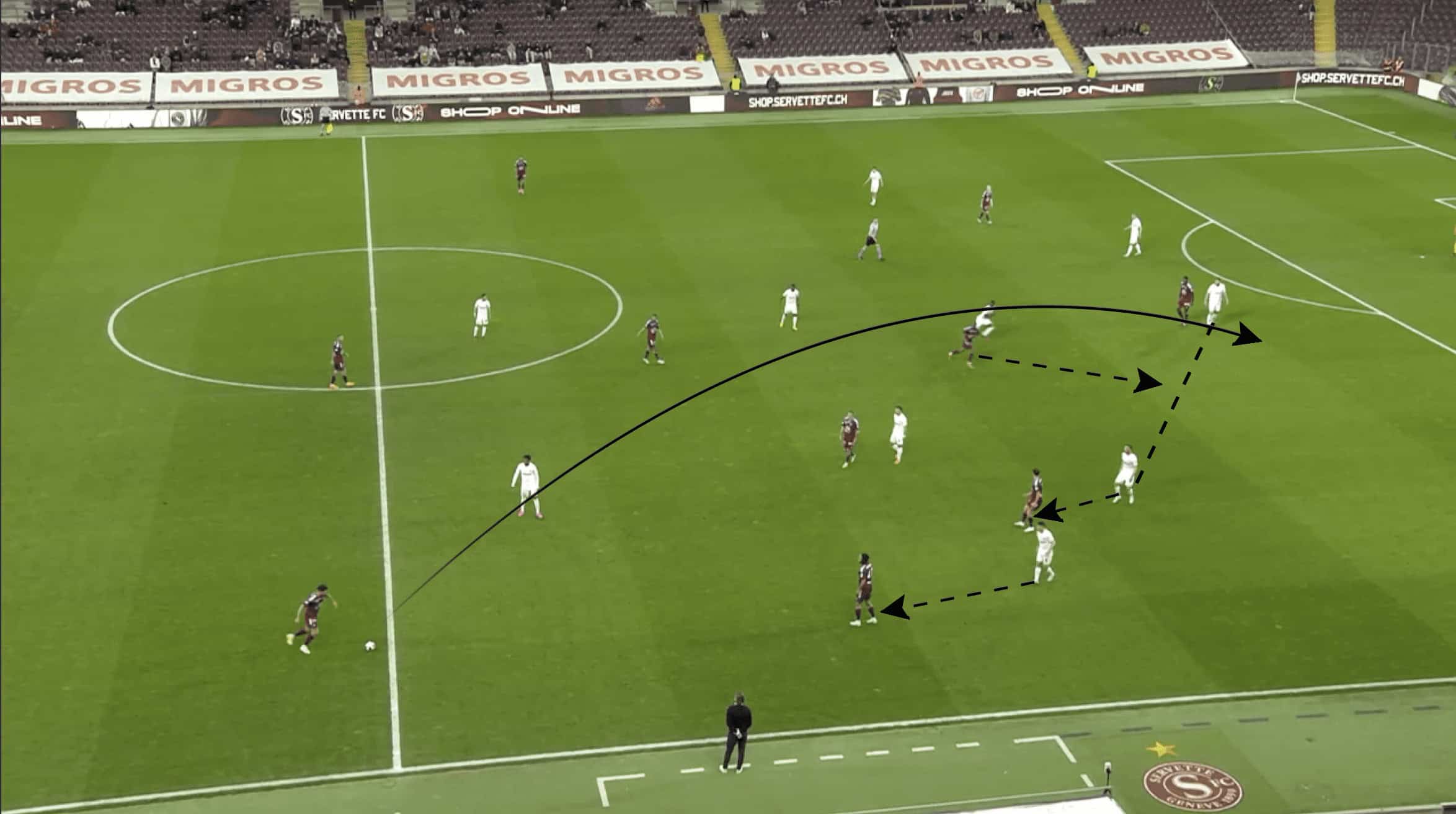
Pflücke Bedia as well as Timothè Congat then look to make supporting runs into the box.
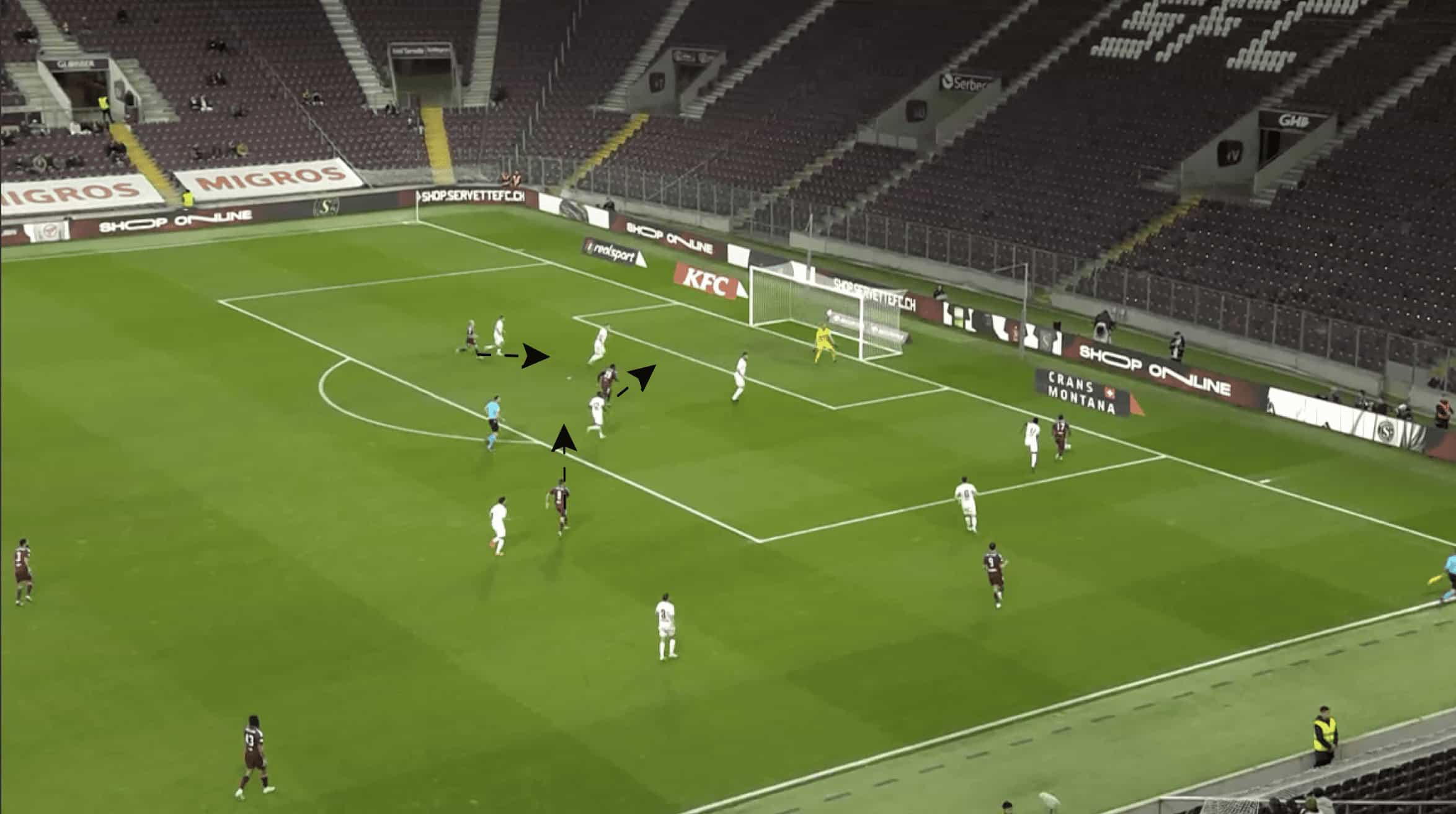
Midfield Involvement
The two advanced midfielders as well as Clichy also may look to receive the ball from the back three. In these instances, instead of running into spaces in the last line of defence, one of the advanced midfielders may drop into deeper areas. However, there are few instances where they receive the ball from the centre-backs in this position.
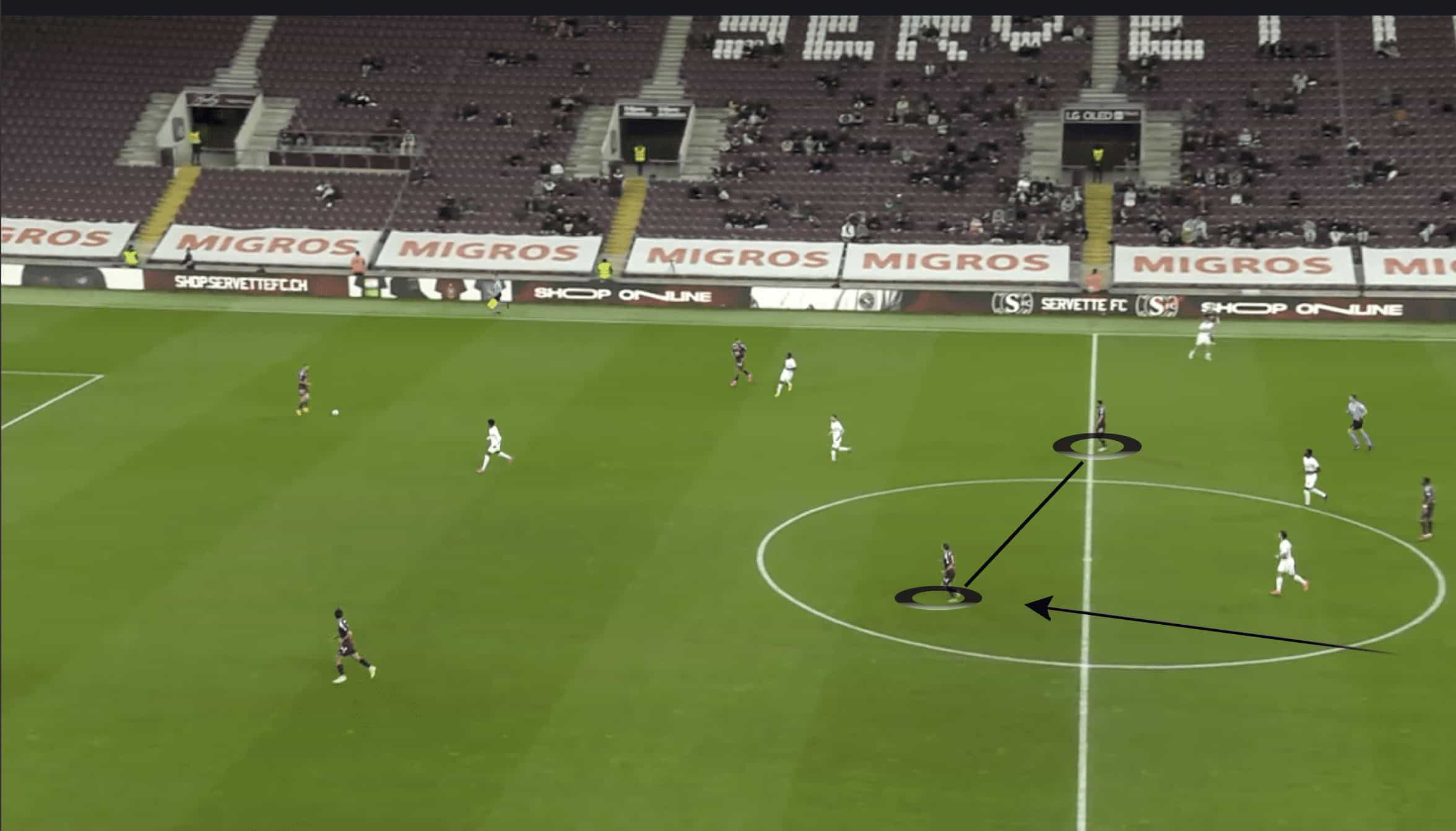
In other cases, the advanced midfielders will look to receive the ball from the wingbacks and defenders between the defensive and midfield lines.
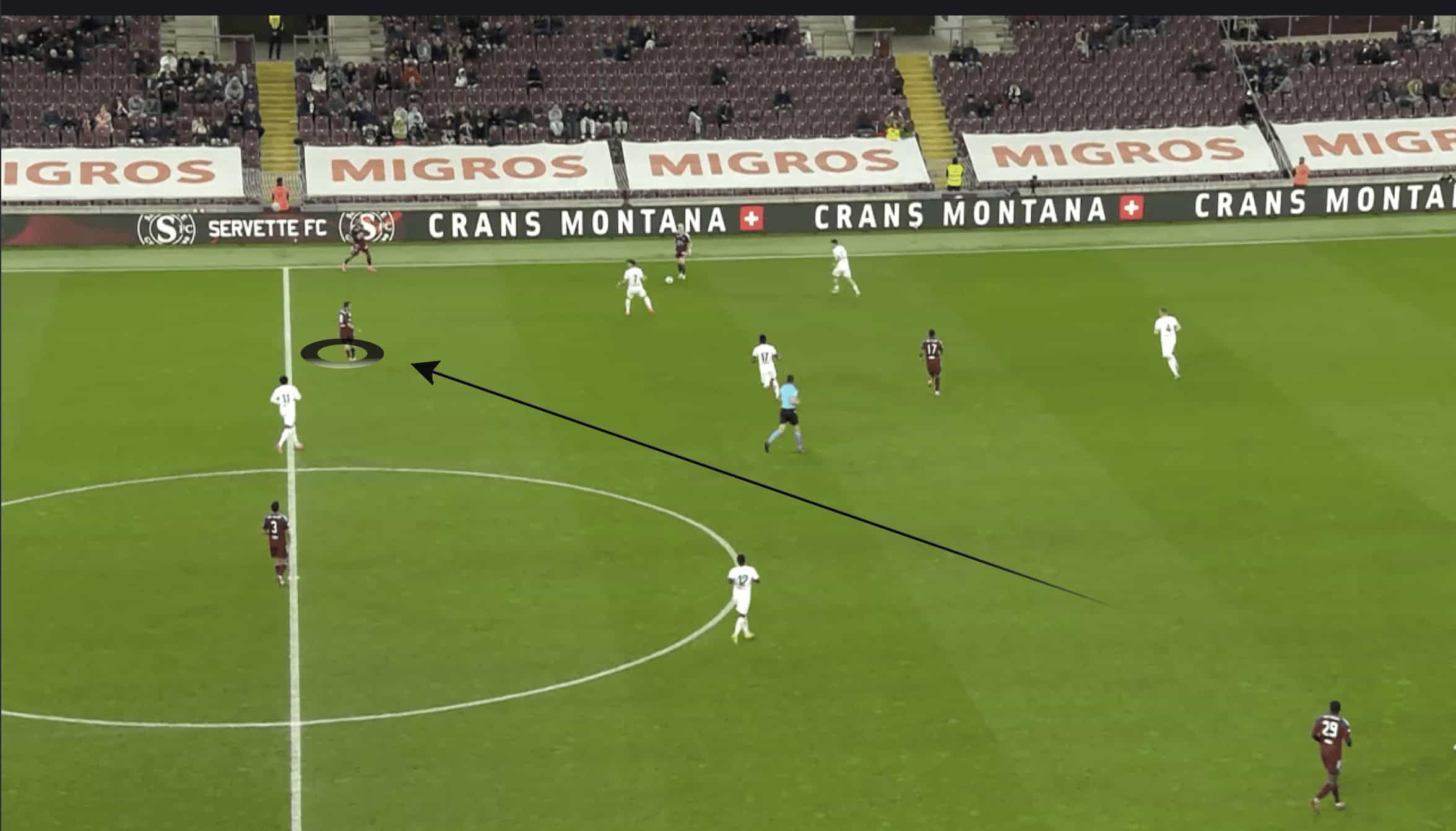
The following example shows a combination of all aspects that have been previously mentioned. In this example, Kutesa drops deeper to receive the ball, with Cognat the other advanced midfielder dropping deeper to form a double-pivot a few seconds earlier.
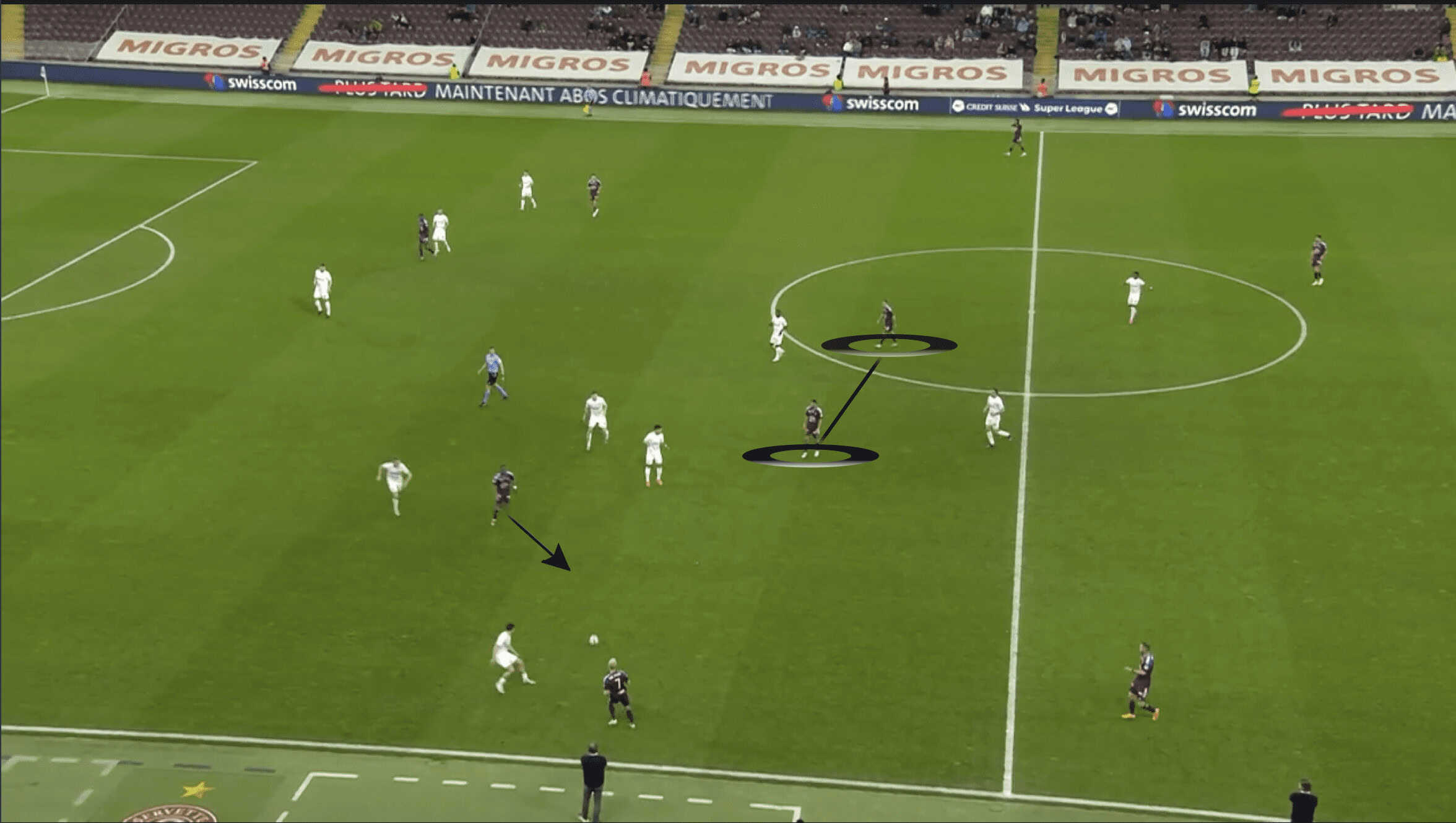
After Kutesa receives and plays the ball back to the centre-back, Cognat then makes a run from deep, attacking the space.
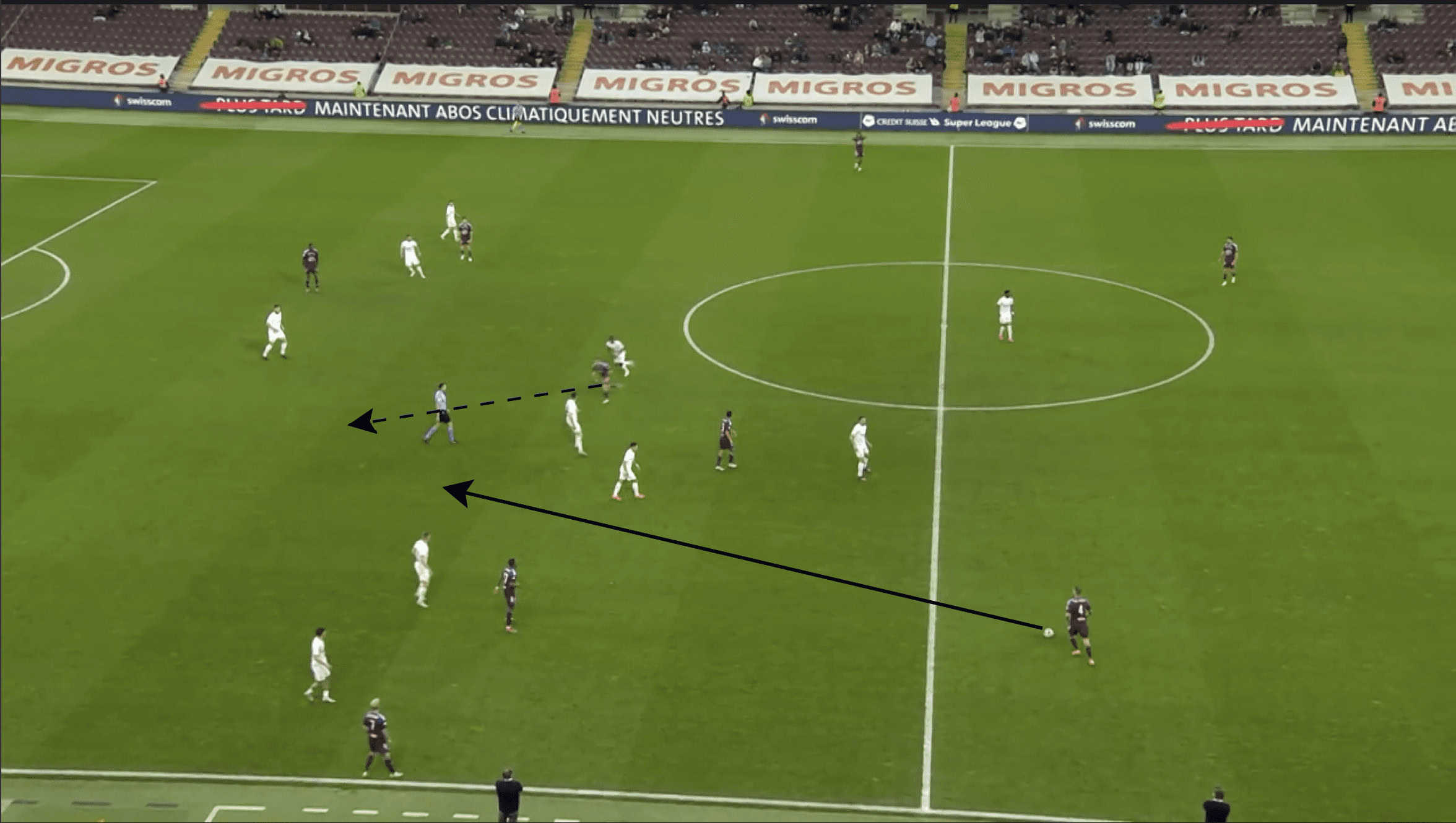
Passes are played more to dropping midfielders when the opposition’s defensive line is not as high, therefore making the execution of long balls more difficult as there is less space to run into.
Struggles with support in wide areas
It is important to note that the use of long balls and crosses are not inferior ways of playing football and the use of these methods is not automatically problematic. In the case of Servette, however, the key issue is how often they manage to work themselves into areas where they can consistently execute crossing actions and create goal-scoring opportunities.
In cases where Servette primarily work the ball into wide areas and look to play crosses, a key issue that arises is that the wide player often lacks support or the support does not come quickly enough. This is a result of the fact that at least one of the advanced midfielders, as well as the opposite winger and striker, will all look to make runs into the box. This results in scenarios where the players in wide areas are outnumbered by the opposition, such as the example below. This in turn makes it excessively difficult to create crossing opportunities and makes it easier for the opposition to defend as the lack of support players means there are no other risks available that could lead to a reduction of their defensive cover.
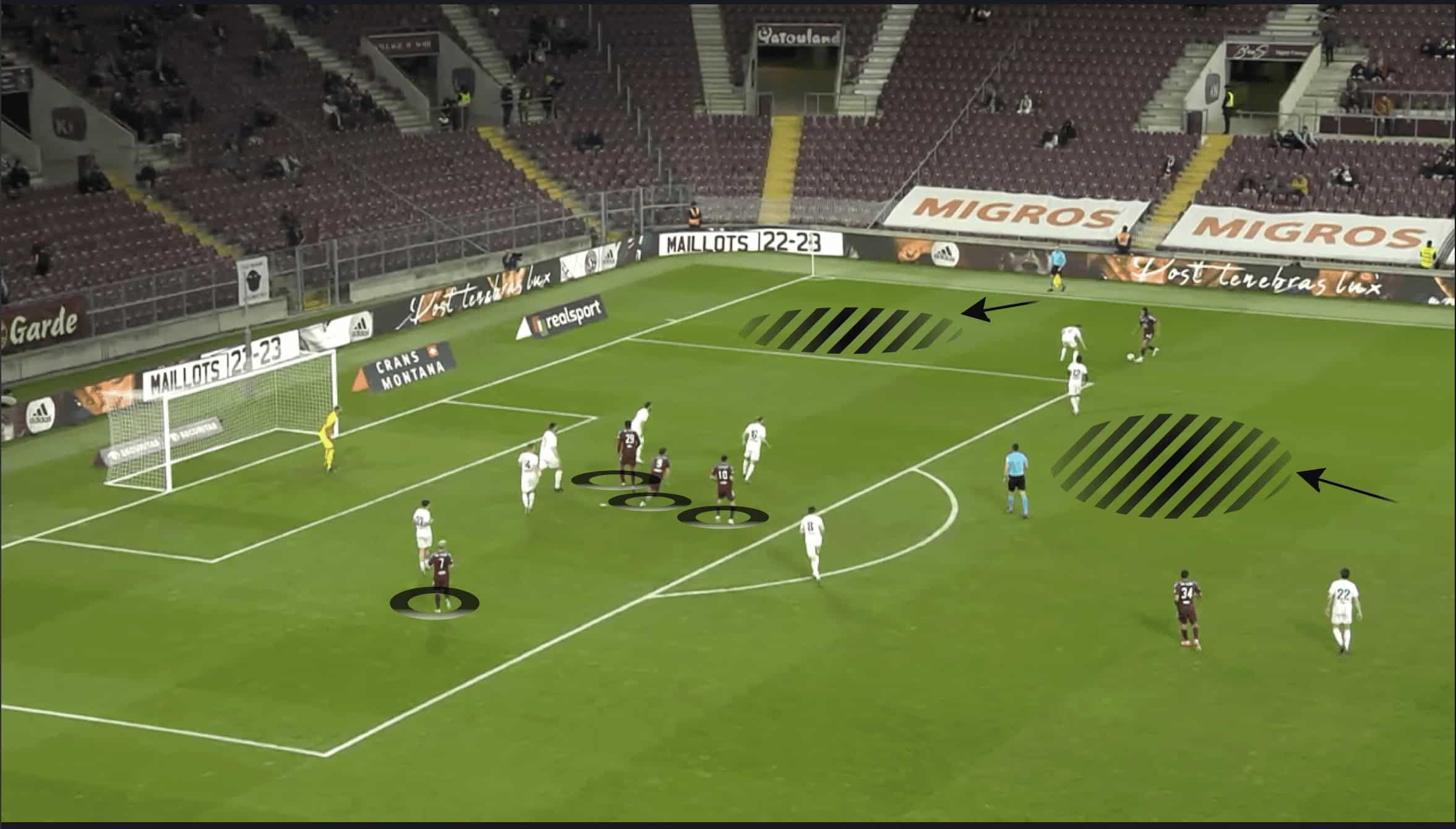
Moments later, Mbabu receives additional support. However, due to the length of time that it takes for support to arrive, the opposition is easily able to reorganise themselves and, as can be seen in the example below, Servette are still outnumbered in the wide areas. This means it is difficult for Servette to sustain pressure in the final third and because of this, the side goes from being in an advantageous situation just moments earlier to having to play the ball back to the centre-backs.
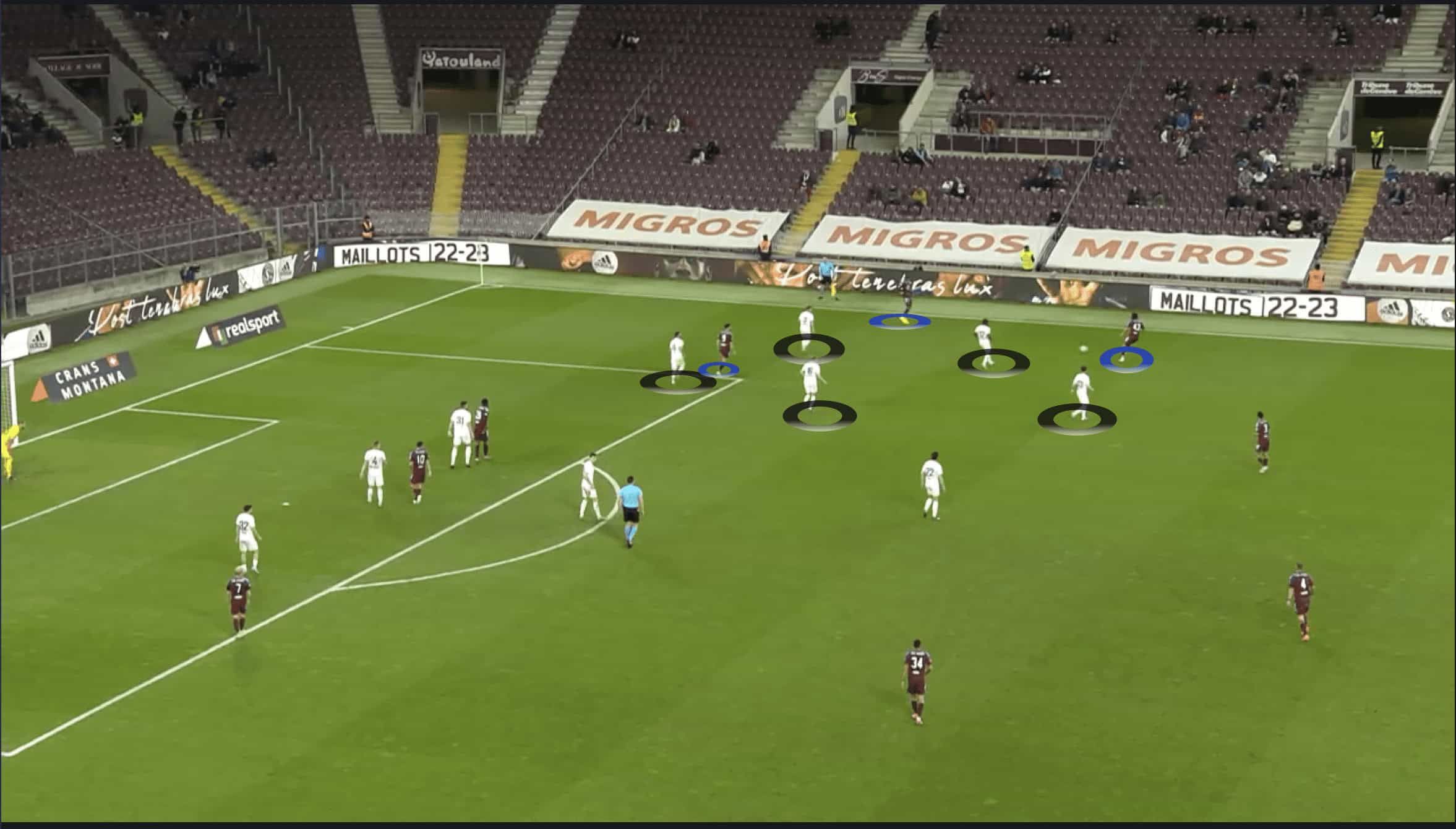
In the image below, another situation where a player receives the ball out wide occurs. In this situation, Stevanović takes a touch before looking to immediately cross to the three players making runs into the box. From this example, however, we can see a reduction in the compactness of the opposition’s last defensive line. But Mbabu stays in his position rather than support the winger with an underlapping run which could potentially allow for a cross to come in from an area much closer to goal.
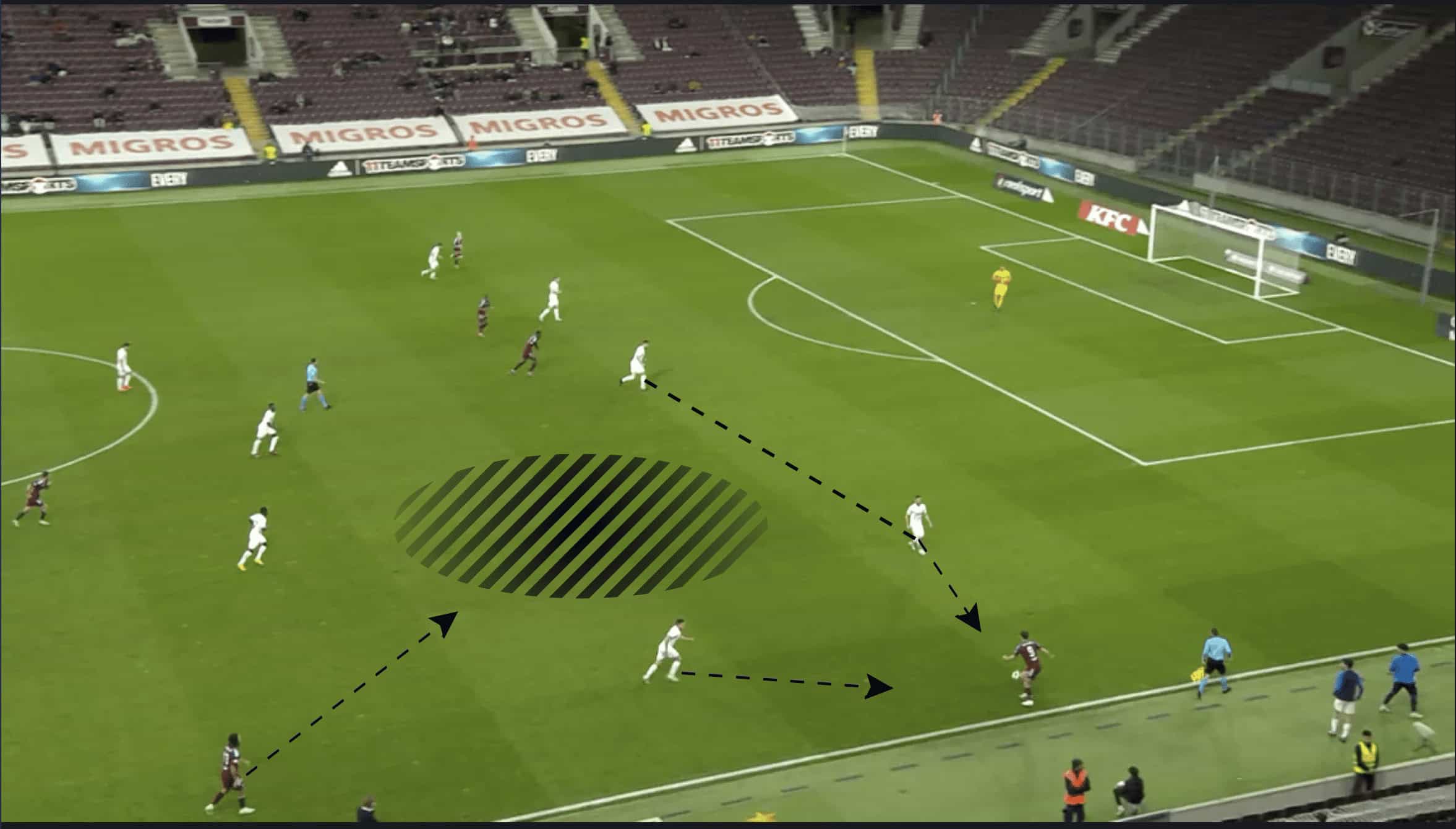
In less advanced areas, a similar problem still persists, which can be seen in the image below. As Baron receives the ball, Clichy has an opportunity to support Baron by making a run into the space ahead of him. Having already been outnumbered in this area by the opposition, Clichy moving and receiving the ball would force the opposition midfielder into making a choice on whether or not to step up and press him.
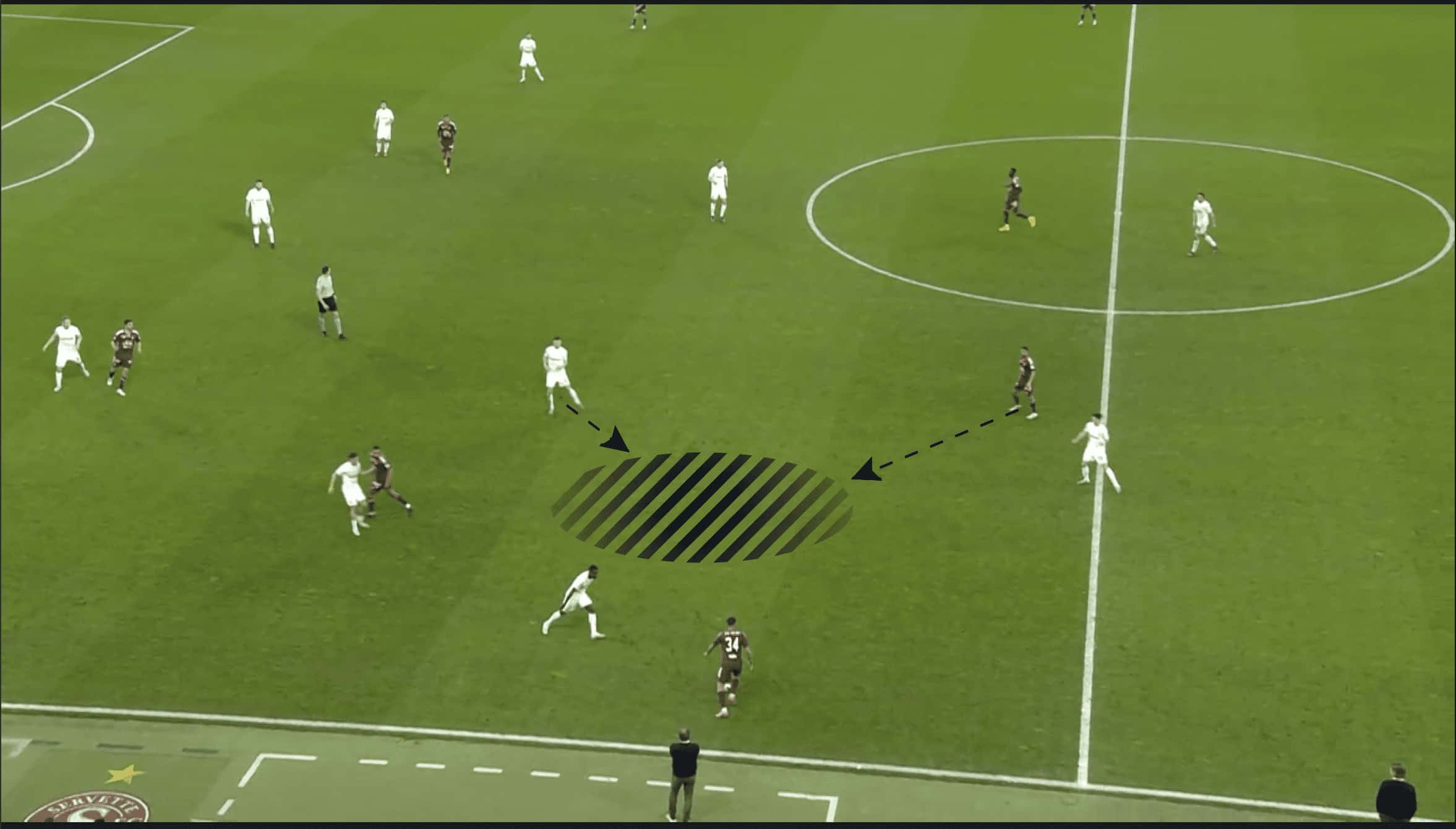
Through conducting this analysis, it appears as if these issues in possession in wide areas occur for two reasons.
The first is a structural issue, which takes place when Servette play with a single pivot and two advanced midfielders. The two advanced midfielders as mentioned earlier look to run into the box when the ball is in wide areas. This results in the wide player not having any support when they are on the ball, as the distance for Clichy to cover to offer any support is too large as well as the fact that the midfielders are in the box expecting a cross.
Secondly, even when playing with a double pivot, which would allow for midfield support, players do not recognise opportunities to move into space and support the ball carrier which would give them an opportunity to potentially destabilise the opposition’s defensive shape.
Conclusion
With a small remainder of the season to go, Servette find themselves in s strong position to potentially qualify for the Champions League. However, this is not guaranteed due to the very competitive nature of the Swiss super league.
The side’s long ball tactics are generally executed well but the use of long balls as well as the lack of support players receive in wide areas means the side are not able to create chances consistently.





Comments